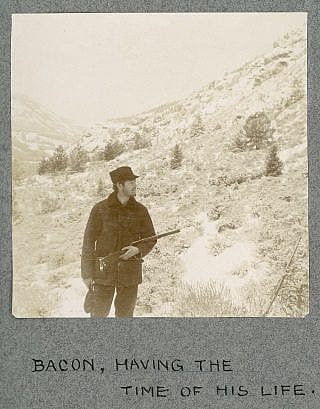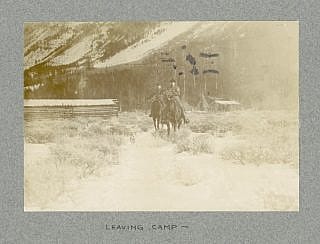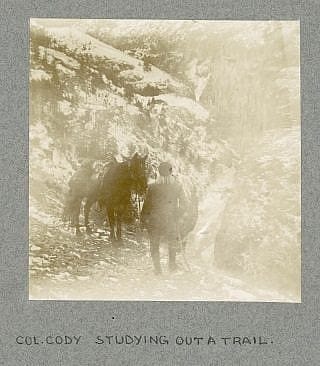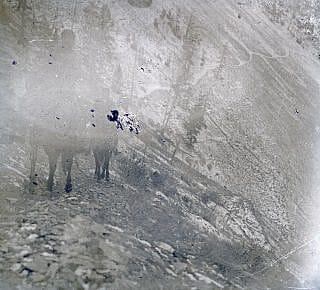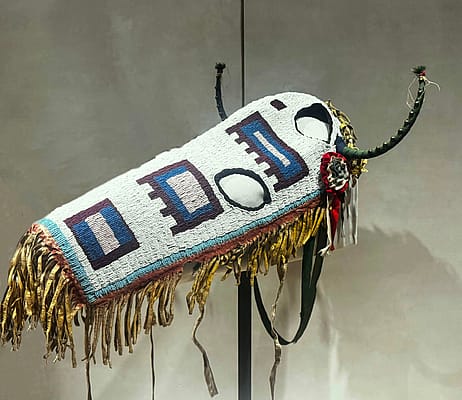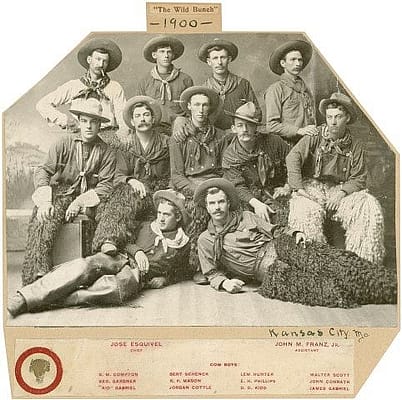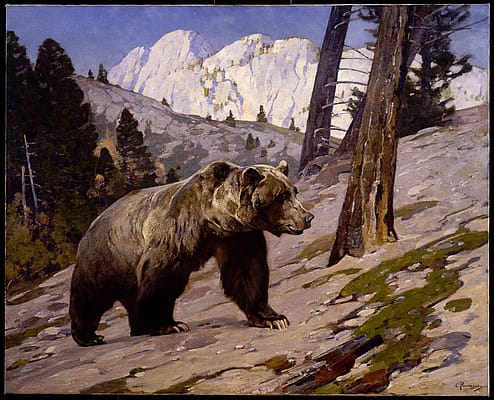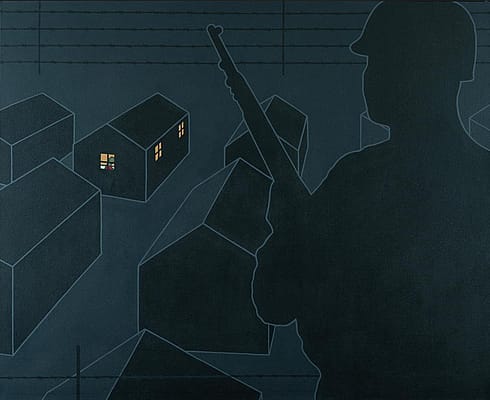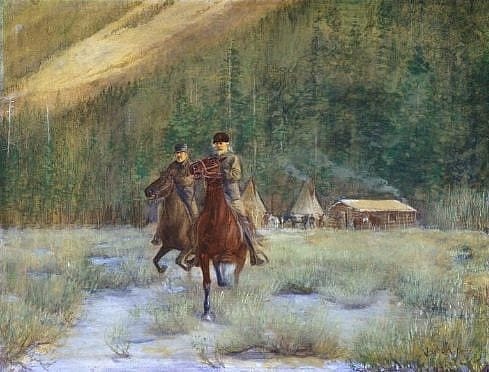
Discovering Irving R. Bacon in photographs
A small painting, Cody on the Ishawooa Trail by Irving R. Bacon, hangs in the Buffalo Bill Museum at the Center of the West. I have walked by it a hundred times and never truly understood how special the amazing story behind the painting really is. It is rich with history. Recently, while looking through a photograph album in the McCracken Research Library, I started to make connections and gained my new appreciation for Irving R. Bacon and his relationship with William F. Cody.

I first discovered Irving R. Bacon a few months ago, as the photographer who cryptically signed his photographs, I. R. B. At the time I had no idea who these initials belonged to, but while cataloging the photograph album, I came across a photograph of a man with the caption, “Bacon, having the time of his life.” With an unusual name like Bacon, I felt confident I could identify him. I was very pleased to realize he was my mystery man, I. R. B. Bacon was an artist born in 1875 and studied art in Detroit, New York City, and Munich. Later, Bacon became the artist for Ford Motor Company.
Hunting Party in the Heart of the Rockies
Over the course of several years in the early 20th century, William F. Cody commissioned several paintings from Irving R. Bacon. Several of these paintings currently hang in the Center of the West galleries. Two paintings, Cody on the Ishawooa Trail and Leaving Camp, were the results of an invitation William F. Cody sent to Bacon in April 1903 stating, “I am going to take a great hunting party in to the Rockies in Nov-… I want you to make the trip with me and paint pictures of the trip.”
The Pictures of TE Ranch, Cody photo album charts the progress and preserves the images of this early winter hunt near Cody, Wyoming. William F. Cody, Irving Bacon, Dr. Frank Powell, and others traveled up the South Fork of the Shoshone River with a stop at Cody’s TE Ranch on the way to a hunting camp in, what Bacon called, “a dreamy snow-covered dell ‘In the Very Heart of the Rockies.'”[1]
The photographs in the album offer striking comparisons to the two paintings that resulted from the trip. For instance, the painting Leaving Camp shares many of the same features as a photograph with the same caption. In the painting a building is missing on the left and Cody and Frank Powell are the focus in the center.
In addition to the photographs and paintings, Irving R. Bacon wrote an article titled, “In the Heart of the Rockies with Cody,” about the hunting trip. Bacon provided several personal insights that further explain the composition of his paintings. Ishawwoa Trail is very similar in composition to a photograph captioned, “Col. Cody studying out a trail,” with the exception of the trail cutting across a steep mountain side of loose gravel.
The treacherous trail was a memorable part of the hunting expedition. Bacon described the trail as being, “Across side hills of loose shale, which descended at appalling pitches from dizzy heights above, down to the chasm’s brink below, the sure-footed mountain horses stepped their way. Up we zig-zagged on the old game trail until progress forward could be made only along a narrow ledge, notched in the perpendicular wall rock by queer nature. All dismounted but Cody, whose faith in horseflesh was stronger than even the oldest mountaineer’s.” The photograph shows Cody at the end of just such a trail. Ishawooa Trail is a combination of these two images and the experiences that Bacon found most memorable.
The McCracken holds many of the papers and photographs that show the behind the scene perspective of many different collections and items in the five museums at the Center of the West. This is one of my favorites.
[1] Irving R. Bacon, “In the Heart of the Rockies with Cody,” Outdoor Life XIV, no. 5, 721.
Written By
Kathleen Broeder
Kathleen Broeder is the Photograph Cataloger at the McCracken Research Library where she describes the people and places in photographs. When not becoming familiar with faces of the long gone, she can often be found enjoying the sun with a good book or knitting.
